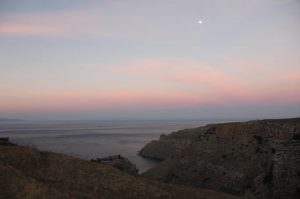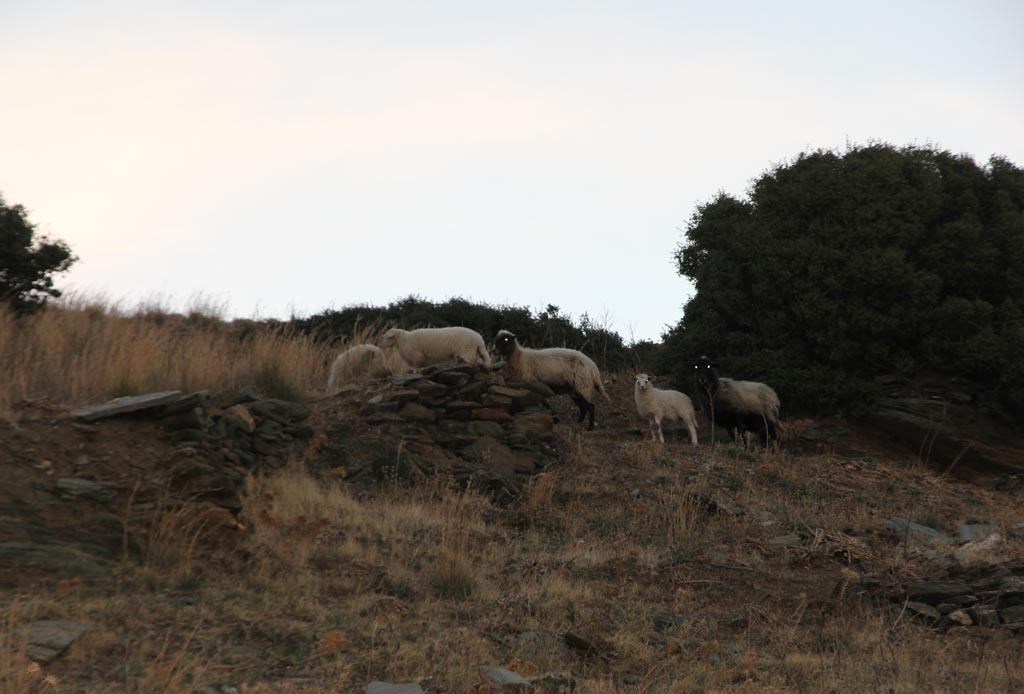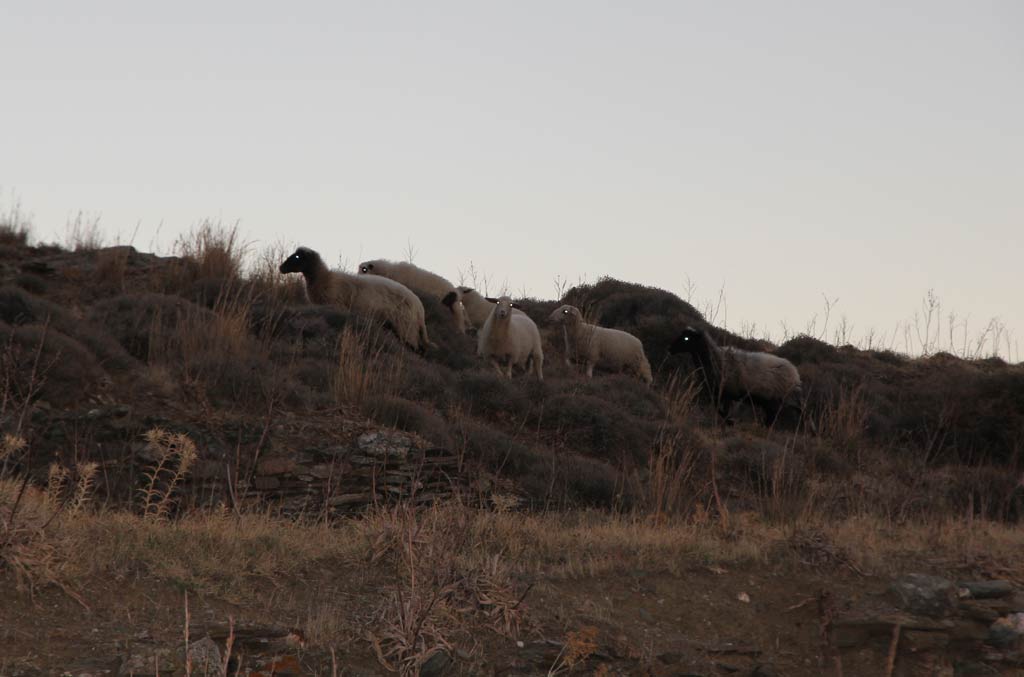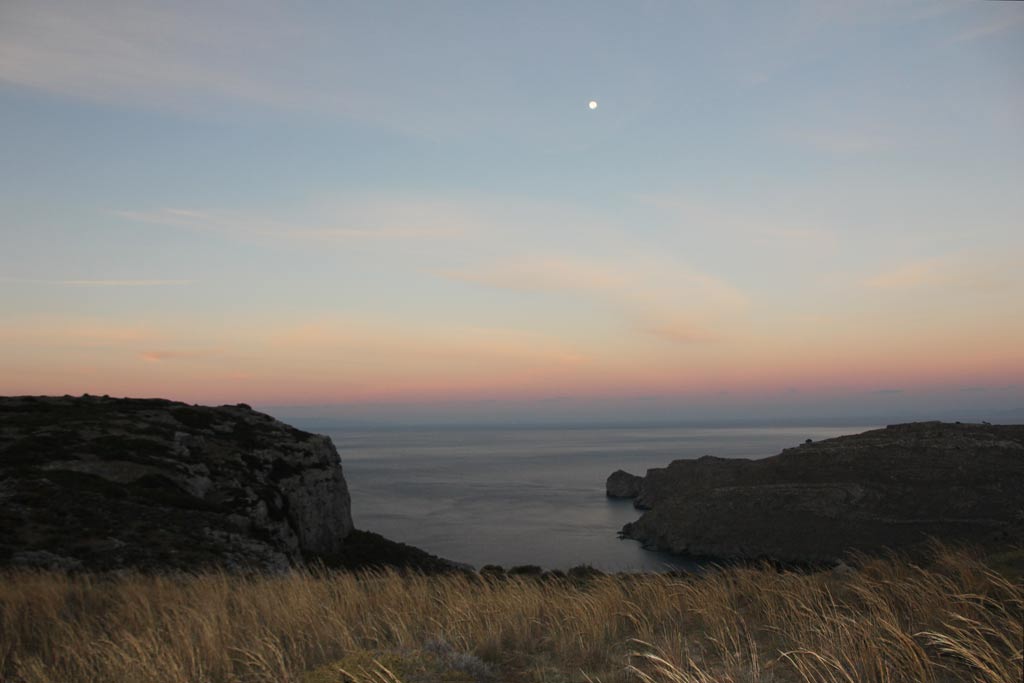by Irma Havlicek
Powerhouse Museum Web Producer
I just thought I’d share with you a couple of the sights that greeted Lesley Beaumont, Lea Alexopoulos and me as we walked to the Zagora site recently – a beautiful dawn with large Moon above (I think the Moon had been full the previous night), and also some sheep which passed by us on the way down. They only turned spooky in my photographs (because of a ‘white eye’ effect – like ‘red eye’ in humans) – but the photos made me smile, so I thought they might make you smile as well.

Livestock like sheep and goats are among the greatest threats to the preservation of the remains of the Zagora settlement. They can disturb the site by trampling over and through walls. The conservation work of the archaeologists in the 1960s and 70s has protected most of the site in the intervening 40 years, and our Zagora Archaeological Project has plans in place to continue with this practice of conservation. The topic of how to protect Zagora from damage by livestock produced the most animated discussions between the local community and Zagora archaeologists during our recent public seminar about the project in Chora.
There will be more about archaeological conservation at Zagora on the blog….


You may wonder why I use a capital ‘M’ for Moon. This is because of my work at Sydney Observatory, where the astronomers request this to distinguish the Earth’s satellite, our Moon, from the moons which orbit around other planets in our solar system and beyond. Similarly, we use an upper case ‘S’ for Sun.

